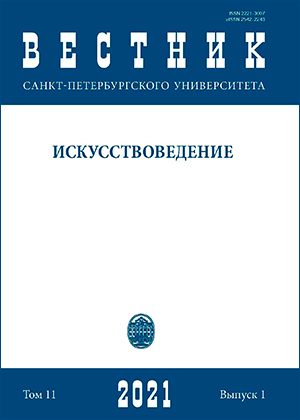The “Dance with Daggers” as an Ethno-Marker of Adyghe Culture
DOI:
https://doi.org/10.21638/spbu15.2021.103Аннотация
This article reviews the history, semantic scope and meaning of the “dance with daggers”, which has survived today as a solo male stage number. The dance is becoming a very important part of academic dance concerts in the North Caucasus, and at the same time dancers with daggers are invited to traditional weddings and corporate parties. Сamechas (kъамэчIас) are identified as military sports and exercises, while also being a modern dance concert number with the same name. The military sport, circus and dance characteristics of this action are revealed in the article. It is proved that the dance is based on the demonstration of military merits, such as the ability to handle sharp knives freely and easily, to throw them at a target, to overcome any obstacles through high jumps, to keep a visible space in sight, to control the body gracefully and to conquer physical pain. In the history of the development of the dance, a multilayered literary text is formed that has mythological and ethno-informational codes. The meaning of using twelve daggers and a papakha (sheepskin hat), symbolizing intellect/reason and equal to any Caucasian man’s head is revealed. The movements on toes allowing one to “rise”, to be close to the gods and to conform to the contours of the mountain landscape, are comparable to the fine graceful movements of mountain animals using any stone or mound as support. Jumping, whirling, lunging, and manipulating with a large number of daggers are considered as signs that reveal deep ethnic values. The choreographic and musical component of the dance is analyzed as well as tricks that are included in the plot of the dance, allowing the performer to demonstrate traditional hand positions, certain steps, jump height, spin speed. The Western Adyghes have formed a stable musical composition for the “dance with daggers”, which consists of three tunes: “Dzherakai Zafak”, “Kabardinka” and an Ossetian melody arranged by the famous Adyghe accordionist Kim Tletseruk. “Gathering” music also symbolically represents the “dance with daggers” as a product and artistic practice of the entire Caucasus.
Ключевые слова:
dance with daggers, dancing tricks, Caucasian dances, solo male dance, къамэчIа
Скачивания
Библиографические ссылки
Загрузки
Опубликован
Как цитировать
Выпуск
Раздел
Лицензия
Статьи журнала «Вестник Санкт-Петербургского университета. Искусствоведение» находятся в открытом доступе и распространяются в соответствии с условиями Лицензионного Договора с Санкт-Петербургским государственным университетом, который бесплатно предоставляет авторам неограниченное распространение и самостоятельное архивирование.







